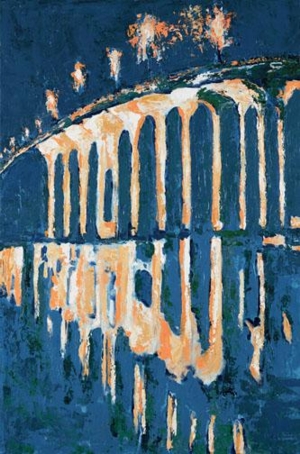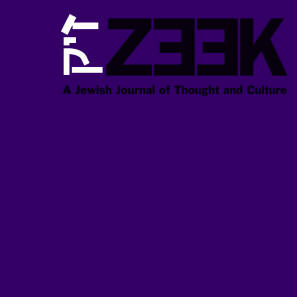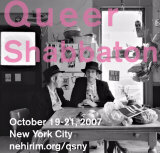 September 07
September 07
Missing A Beat
by Mark Cohen
p. 2 of 2
The problems faced by acculturated Jews especially engaged him. In a riveting article he wrote about Mario Puzo for the Chicago Sun-Times, Krim explored the aura of Puzo’s manly immobility – his obesity frankly exposed as he sat shirtless playing high-stakes pinochle – and how Puzo’s self-possession made Krim feel like a kid. Puzo claimed he had “a thousand years of illiterate Neapolitan peasants” behind him and Krim wondered, “Where are my 4,000 years of superior wisdom? It’s a myth, I tell you. Like so many middle-class ‘reformed’ Jews, I wiped the ancient Hebrew out of myself to become an American, a newborn babe of Democracy.”
Krim traced the origins of this persistent childish innocence to assimilationist social surgery that had early removed something vital and Jewish from his soul. As the child of a successful businessman Krim spent his childhood in comfort in 1920s Manhattan, attended summer camp in Maine, and during the year studied at Kohut, a progressive Jewish boarding school in Harrison, New York. By the time he was 10 this life had come to an end. His father died young, his mother committed suicide, and Krim went to live with grandparents and older siblings. These traumas were (de)formative, but it is an indication of how central Jewish identity was to his life that Krim pointed to his assimilationist background, not the death of his parents, as bestowing on him the most lasting handicaps. His childhood stamped him with a Jewish label but without any corresponding content or pride. In a 1960 essay about his friendship with the intellectual Milton Klonsky, Krim admired a more natural Jewish identity and how it made life better:
[Klonsky] acted like a man, not someone castrated and squirming because of their racial unease, and the more I thought about the unconscious pride and soldierliness he showed in ordinary life the more I was disgusted by my own sliced roots. Each of us typified to me two different kinds of big-city Jewish boy. I noticed that Milt and several other of the Brooklyn (for that’s where he spent most of his formative years) Jewish intellectuals on the Village scene were much more ballsy and less superficially “sensitive” – especially about the Yiddle theme – than the Central Park West Jewish boys in whose aura and style I was formed.
Krim recognized that his more affluent background led him to Americanize earlier than many of his  contemporaries, and it is precisely his sliced roots that make his writing so vivid today for a later generation struggling with the balance between Americanization and Jewishness.
contemporaries, and it is precisely his sliced roots that make his writing so vivid today for a later generation struggling with the balance between Americanization and Jewishness.
Jewish War Artists
Krim’s manic masterpiece of Jewish introspection is “Epitaph for a Canadian Kike,” a frank, outrageous, and comic look at his own Jewish self-hatred. The 1970 essay is Krim’s attempt to come to terms with the late Sam Goodman, a founding member of the rejectionist, scatological, and ugly No!Art movement who represented – to Krim – everything vulgar, unseemly, offensive, and unattractive about being Jewish. Krim was painfully aware that his aversion to Goodman had less to do with Goodman than it did his own insecurities and fears, and in “Epitaph” all of the rage and insult he directs at Sam only makes Krim look worse, and Krim knew it. It is Krim’s ruthless honesty and abandonment of respectability that gives the essay its power and makes it a valuable testimony.
“I could accept being ‘Jewish’ very nicely if I didn’t look like one, ‘act’ like one,” writes Krim. Then along came Goodman, “short, belly sticking out, hooked schnozzola” to bring “me back to my own self-persecution dreads.” Krim admired Goodman’s anti-art sculptures for the 1964 “Shit Show” – “ingenious, surefingered, excellently crafted little horrors:”
But the man, oh dearie me, the man! THAT was something else, wasn’t it? First, foremost, most obvious I guess and therefore unworthy – but then I am as unworthy as you, my hypocrite readers, and as nine-tenths of humanity, so we all make a team, don’t we? – there was this eerie likeness to the Hitler caricature of the slimy Jew about Sam.
Jewish discomfort doesn’t get anymore vivid than that, but Krim then goes beyond himself to understand Goodman as a deliberate offender, in life and art, in reaction to the Holocaust. Goodman and the other Jewish artists of the early 1960s No!Art movement “tossed their bum stinkbombs at U.S. life from the experience of the war in Europe, with charred Jews down at the bottom of the entire pyramid that ended with Uncle Sam boogie-woogieing before the whole globe on the triumphant top. They were inflamed Jewish WAR artists.”
That may not be the kind of writing that suits Beat anthologies, but anthologies of Jewish literature should make room for Seymour Krim.
Mark Cohen is the author of Last Century of a Sephardic Community.. His articles have appeared in Midstream, History of Photography, Journal of Jewish Studies, Turkish Studies Journal, American Jewish History, Saul Bellow Journal, Modern Judaism (forthcoming), and other publications. He lives in the San Francisco Bay Area.









